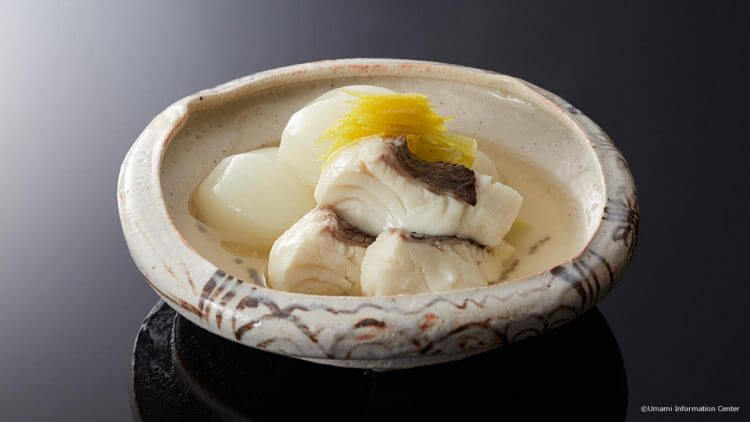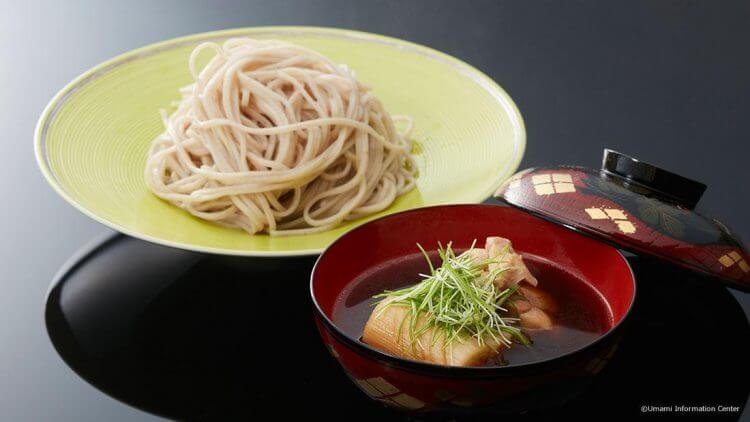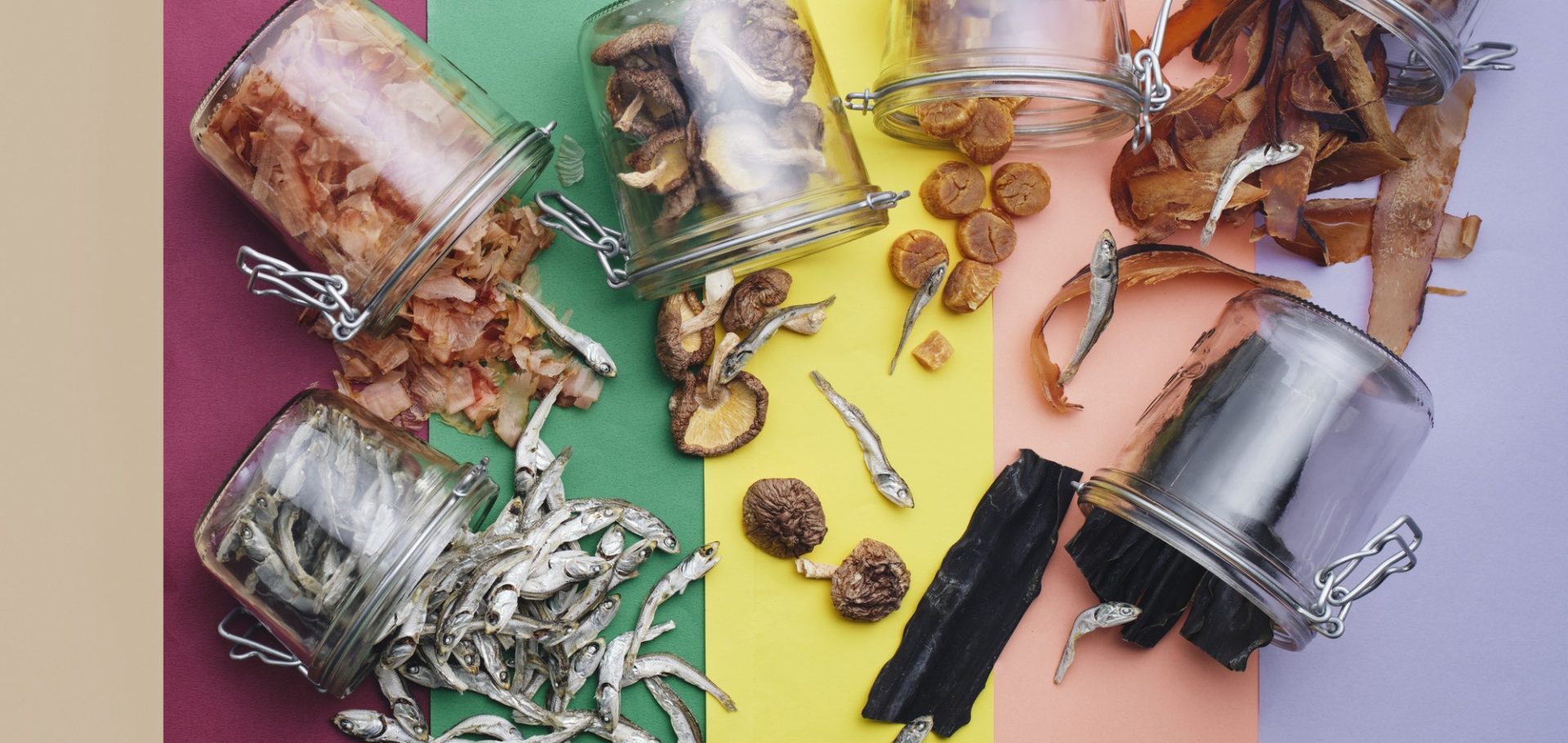Some 16,500 years ago, Jomon hunter-gatherers in northern Japan invented a revolutionary new technology: pottery. Judging from archaeological evidence, these earliest fired clay pots, used for both storage and cooking, enabled Jomon people to safely preserve and consume a wider variety of foods than ever before. And the Jomon diet was indeed diverse, ranging from seasonal wild plants, seeds, and nuts plentiful on land—though often inedible until boiled—to shellfish and other bounties of the sea.
Dashi’s ancient roots
Today sushi is synonymous worldwide with Japanese cuisine, or Washoku. But rice garnished with raw fish is a relatively new culinary development, no more than a few hundred years old in the form we know today. Rice itself only reached Japan about 2,500 years ago, recent by global standards. By then, the inhabitants of the Japanese archipelago had been cooking food in pots for 14,000 years—thousands of years before anyone else in the world—so it’s no wonder they became proficient at it. And in the process, they unlocked the secret of umami: dashi, or what we might call broth.
Dashi’s broad palette of flavors
Today stewed fish and vegetables are still typical of Japanese fare, from home-cooking to high-end cuisine and everything in between. Dashi comes in numerous varieties varying from region to region. The most common are kombu (kelp), shiitake, katsuobushi (skipjack tuna), niboshi (baby sardines), yakiago (flying fish), and prawns. These ingredients are typically dried, though depending on the fish the process may first involve boiling, grilling, or smoking. Then the preserved ingredients are soaked in either cold or hot water for varying lengths of time to extract the broth, which is added to soups, stews, sauces, as well as dishes like okonomiyaki (a type of pancake containing meat or fish and vegetables) and chawanmushi (a savory egg custard).

Simmered sea bream with kombu dashi

Soba noodles with katsuobushi dashi
The science of dashi
Dashi is used to subtly balance and modulate flavor. The ingredients of each dish dictate the choice of broth, but a useful rule of thumb is that fish broth is used for cooking vegetables, plant-based broth for fish. Traditionally, this is explained in terms of harmonizing ingredients from the mountains with those from the sea. Today we understand this principle on a more scientific level in terms of certain amino acids—the building blocks of protein—that trigger our perception of umami, the fifth taste along with sweet, salty, sour, and bitter. Kelp contains glutamate, the essence of AJI-NO-MOTO® umami seasoning, while fish and prawns have glutamate along with inosinate. Dried shiitake possesses yet a third umami-inducing compound called guanylate, as well as glutamate. Combining amino acids by cooking with umami-rich broths creates deep, complex flavors and reduces the need for added salt or fat. By contrast, Western broths—cooked up from meat, bones, vegetables, herbs and spices—are used mainly to augment the flavor of meat.
November 24th: Washoku Day
In recent years, Japanese food—washoku—has attracted international attention for its simple yet elegantly-prepared, well-balanced dishes made from an array of seasonal, locally-sourced, healthy ingredients. In recognition of this culinary tradition rooted in seasonal festivals, a respect for nature, and the sustainable use of resources, UNESCO added Washoku to its list of the intangible cultural heritage of humanity. And to ensure those skills and knowledge, including the preparation and use of dashi, are passed on to future generations, the Japanese government has designated November 24 “Washoku Day.”

